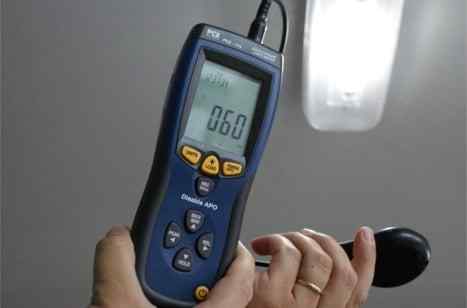What is a Lux Meter and How to Use It

The first light or lux meter used selenium cells to measure direct light intensity. It was invented by Edward Weston in 1932 and was used commonly in the photography industry.
The most advanced lux meters today use digital technology to provide fast, accurate readings displayed on LCD screens. Silicon photodiodes offer a spectral response close to the CIE-determined luminous spectral efficiency.
Lux meters are configured to take into account the variations between individual perceptions of wavelengths, referred to as luminous flux, and the varying light intensities that are emitted from different light sources.
A good quality lux meter will provide readings for all light sources including LED light, fluorescent bulbs, metal halide, and high-pressure sodium.
Digital lux meters can store thousands of readings, or transfer data directly to a computer via wireless internet or USB key.
They are designed to be used in all conditions and are easy to handle in any environment. The ruggedized casing provides security for the user in remote and dangerous conditions.
What is Lux Meter
A lux meter measures the intensity of light or illuminance present in any given environment in lux units.
It operates by capturing light using photovoltaic material such as a silicon photodiode and filter and converts the light to an electrical current.
The current is measured and this allows a calculation of the lux value of the captured light.
Lux Meter Working Principle
The measurement of illuminance is a key feature of many countries’ health and safety requirements, as studies increasingly show that poor lighting can lead to bad health outcomes for workers.
As well as safety, correct lighting conditions can increase productivity, make a pleasant environment for customers, and assist in achieving successful industrial and medical operations.
Lux Meter Measurement
Lux values have been established based on ambient lighting present in a range of conditions. This has given a measurement of .0001 on a cloudy, moonless night, and a measurement of from 32000 up to 100000 in direct sunlight, with values such as 150 for a train station in between.
When creating optimal lighting in a new office, factory, or shop floor, the desired lux values are determined by the purpose of the area being measured.
An office will work best at between 700 and 2000 lux, while a shop interior should offer between 750 and 1500 lux. Libraries are usually lit to between 500 and 1500.
What is one Lux worth?
The term ‘lux’ refers to how many ‘lumens’ it takes to spread over a square foot of the area being measured.
A lumen is the intensity of light radiated by a 30cm (1 foot) candle. Measurements are taken in lux (lx) or footcandles – one footcandle equals 10.57 lux.
Digital lux meters are easy to operate and offer quick readings for lighting specialists. They are readily available and come in a variety of specifications suitable for any environment. Head to a specialist such as RS Components for help in choosing the best lux meter for your purpose.
Also Read: Best Free Video Editing Software
Follow Top and Trending on Google News and receive the latest alerts and the main news about apps, technology, beauty, entertainment, and all the top 10 related posts.
